Technology and innovation report
Sponsored by



Sponsored by



Martin Ryan,
Managing Director at Fexco Managed and Advisory Services, examines potential public sector trends in 2025.
As 2025 begins, the Irish public sector will continue to focus on delivering profound digital transformation.
The push continues for increased investment and procurement of modern digital government and public services. These align with strategies like Harnessing Digital: Digital Ireland Framework and Connecting Government 2030, which sees Ireland targeting 90 per cent of applicable public services to be consumed online by 2030, surpassing EU targets.
2024 has seen significant developments in artificial intelligence, with further disruption as the global AI race continues unabated into 2025.
Amid these evolving challenges and opportunities, what are the pivotal trends for 2025, and how can they reshape public service delivery?
We have discussed how the cornerstone of digital transformation lies in citizen-centric design. Public sector organisations prioritise platforms that provide seamless, userfriendly access to services. This approach entails understanding user needs, simplifying service access, and ensuring platform consistency.
Initiatives like the “once-only” principle, where citizens provide information once for reuse across services, enhance efficiency and accessibility. Simplifying processes through standardised frameworks ensures inclusivity while prioritising feedback loops with citizens for continuous improvement.


The increasing complexity of cybersecurity threats demands robust measures; frameworks like NIS2 and DORA mandate ICT risk management and operational resilience to protect critical services.
Our expertise in regulated services and our international financial services footprint can support the public sector to meet these challenges, leveraging our strict adherence to international standards and use of secure, compliant systems.
Modernising payment systems is essential for the digitalisation of public finance. Embedded finance solutions simplify financial processes for citizens and governments alike, such as the use of corporate payment solutions from CBI regulated entities.
Our four decades of expertise in these areas ensure secure, efficient, and userfriendly payment experiences, contributing to the broader digital transformation goals.
Artificial Intelligence emerged as the hot topic of 2024, but adoption was primarily evidenced by pilot projects and early industry movers. 2025 may be the year of widespread adoption of AI in public sector services but only successful if AI services are designed and built with safety, governance, and accuracy at their core.
AI can redefine public sector operations and are pivotal in managing growing service demands without inflating costs.
Solutions like Fexco’s generative AI service SmartAssist integrates Artificial and Human intelligence, enhancing service delivery, increasing efficiency, and simply “making life easier” for all users, including colleagues and citizens, all the while staying firmly within the guardrails of the guidelines for the safe use of AI in the Public Service. Queries on Fexco’s SmartAssist services should be directed to Ailish Hansen [ahansen@fexco.com].
Collaboration between the public and private sectors is accelerating innovation, and 2025 is predicted to see new public-private partnerships emerging to deliver new solutions, services, and experiences to the ultimate benefit of Irish society. These partnerships will combine technological expertise, operational efficiency, and investment to enhance public services.
At Fexco, partnerships are more than just a term; they are a core value that has driven our success for over 40 years. We are incredibly proud of the trusted partnerships we have developed with some of the most impactful organisations in Irish society, such as The PrizeBonds Company, which is a 50:50 joint venture between An Post and Fexco, contracted by the National Treasury Management Agency (NTMA)


to operate the Prize Bonds Scheme and has been operating since 1989.
Our experience in co-creating tailored solutions highlights the transformative potential of such collaborations. For instance, our strategic partnership with the Sustainable Energy Authority of Ireland (SEAI) has moved beyond traditional service delivery to a valuedriven, trusted partnership focused on balancing the correct blend of people, process and technology solutions to contribute to a more sustainable future for us all. This partnership between SEAI and Fexco was recognised in November 2024 by winning the coveted CCMA Outsource Partnership of the Year award.
Through these partnerships, Fexco demonstrates how collaboration can enhance citizen and business engagement amid pervasive digital disruption, ultimately delivering superior public services.
The digital transformation trends for 2025 reflect Ireland’s ambition to lead in delivering efficient, inclusive, and transparent public services. While the potential benefits are immense, maintaining alignment with citizen needs is paramount.
Practical implementation strategies, such as prioritising feedback, embracing agility, and fostering collaboration, will be critical. With forward-thinking
organisations like Fexco driving innovation, the Irish public sector is poised to build a digital future that meets the expectations of a modern, engaged society.
Ireland’s digital transformation journey is a bold step towards an inclusive and sustainable future. The sector has ambitious targets aligned with government plans. As demands increase, how will the public sector achieve these goals while balancing the growing impact of AI in 2025? The public sector can navigate evolving challenges while delivering impactful services by focusing on user-centric design, embracing advanced technologies, and fostering collaboration.
Overall, the big trend for 2025 underscores the importance of balancing technological innovation with human needs. The groundwork laid today will shape a thriving digital society for years.
W: www.fexco.ie


Thierry Boulangé, Deputy Head of Unit at the European Commission’s Directorate-General for Communications Networks, Content, and Technology, outlines the EU AI Act’s goals and implementation framework.
The EU AI Act, which entered into force in August 2024, is the world’s first comprehensive legislation regulating AI. Its goal is to ensure that AI systems are safe, uphold fundamental rights, and foster innovation.
Boulangé goes into detail on the Act’s tiered, risk-based framework, which is designed to harmonise rules across EU member states and prevent a fragmented regulatory landscape.
The Act categorises AI systems into four levels of risk:
1. Unacceptable risk: AI applications deemed harmful, such as social scoring systems or those designed to manipulate individuals, are banned outright.
2. High risk: AI used in critical areas, such as recruitment, justice, law enforcement, and essential public services, must meet stringent requirements to protect safety and rights.
3. Limited risk: Systems interacting with humans (e.g., chatbots) must meet transparency obligations to ensure users are aware they are engaging with AI.
4. Minimal or no risk: Most AI systems fall into this category and face no specific regulatory obligations but can voluntarily adhere to codes of conduct.

The inclusion of rules for general-purpose AI models, like foundational models that power generative AI systems, was a key addition during negotiations. Developers of these systems must provide documentation to ensure responsible integration and use, with enhanced obligations for systems that pose systemic risks.
The Act establishes a robust governance structure to oversee its enforcement and implementation. High-risk AI systems will be monitored by national authorities, while the European AI Office, recently established, will handle cross-border and general-purpose AI cases. Complementary entities, such as the AI Board and the Advisory Forum, will enable coordination among member states, regulators, and stakeholders.
The implementation timeline reflects a staged approach:
• February 2025: Prohibitions on unacceptable AI practices apply.
• August 2025: Obligations for general-purpose AI models apply
• 2026-2027: Obligations for high-risk AI and transparency requirements will gradually roll out, culminating in full implementation by 2027.
For Irish stakeholders, Boulangé states that this phased rollout provides time to prepare for compliance while ensuring a smooth transition for businesses and innovators.
A cornerstone of the EU AI Act, Boulangé says, is its emphasis on fostering innovation. To support developers, especially small and medium-sized enterprises (SMEs), the European Commission has launched initiatives like the AI Innovation Accelerator and regulatory sandboxes. These tools offer technical guidance and testing environments to help businesses align with the Act’s requirements while remaining competitive.
He says that standardisation will also play a crucial role. Technical standards for high-risk AI systems are under development in collaboration with European and international bodies, ensuring consistency and adaptability as technology evolves. These standards will provide clarity for developers, helping them meet regulatory requirements efficiently.
Asserting that the Commission prioritises inclusivity in its implementation efforts, Boulangé says that the newlylaunched AI Pact, which includes over 120 organisations, aims to foster collaboration across industries and geographies. “By engaging businesses, civil society, and regulatory bodies, the Pact encourages the sharing of best practices and provides early feedback to refine the implementation modalities of the regulatory framework,” he says.
Boulangé highlights the importance of creating pathways for smaller players to contribute to and benefit from these processes. This is particularly relevant for Ireland, where SMEs form the backbone of the economy and are often at the forefront of AI-driven innovation.
The EU AI Act’s influence extends beyond Europe. Boulangé notes ongoing international collaboration, such as the recent Council of Europe treaty on AI, which incorporates global partners like the US, Japan, and Canada. Ireland’s strategic position as a tech hub places it at the intersection of EU and global AI ecosystems, offering opportunities to shape and benefit from these frameworks.
Boulangé states that the Act also incentivises innovation, offering support for startups and SMEs to lead in the development of trustworthy AI.
For public and private leaders, the immediate priorities include:
• Understanding the Act: Familiarise teams with its risk-based framework and upcoming obligations.
• Engaging in standardisation: Participate in developing technical standards to ensure the needs of Irish companies are represented.
• Leveraging support mechanisms: Take advantage of EU-funded initiatives like regulatory sandboxes and innovation accelerators.
Concluding, Boulangé asserts that, as the AI landscape continues to evolve, the AI Act will position the EU as a “leader in shaping ethical and innovative AI systems”.


Across the public service there is a clear commitment to digitalisation and innovation. The digital landscape is ever evolving and the integration of technology and digital channels into our everyday life has been rapid and extensive.
We all interact with digital channels every day, and people have come to expect user friendly and well-designed digital channels when they interact with businesses and public services. Digital Transformation describes the development of digital technologies to improve the way we do business and goes beyond replicating existing processes into digital formats. It requires a ‘digital by design’ approach.
In the Office of Government Procurement (OGP), there are a number of digital and innovation projects taking place to make the processes of procuring goods, services and public works projects easier, more efficient and more sustainable. One of those projects is based on the eTenders platform, Ireland’s national electronic tendering website. Each year, thousands of EU and national-level competitions are published on the eTenders website. A number of updates and improvements have recently been made to the site to make it more intuitive and easier to use.
Firstly, the homepage has been updated to be more user-friendly. Information is now easier to find and the look and feel of the site has been improved. Regular eTenders users might have noticed that there is now new, more focused ‘taskspecific’ training videos available to help with the more common tasks for both buyers and uppliers.
Contracting authorities will be glad to know that there have been a number of other practical changes to the eTenders platform, including:
• Contracting authority users now have access to a printer friendly Tender Report for tenders received on the platform. This report, which can be accessed when opening received tenders, allows the contracting authority users to more clearly identify the original name of the files uploaded by suppliers in response to a tender. Previously, a
contacting authority user could only view the system-generated unique identifier number and not the original assigned by the supplier
• Improvements to the Dynamic Purchasing System (DPS) Workflow to support offline evaluations – The DPS workflow has been enhanced to allow optionality around the usage of the online questionnaire when defining a tender structure.
• Removal of the requirement for a supplier to accept a contract –Previously, a supplier needed to formally accept a contract on the platform before a contracting authority user could continue with the next task in the tender process. Following a recent software update on the platform, the contracting authority user can now bypass this requirement. The contracting authority can now register the supplier’s acceptance on their behalf, thus allowing the continuation of the procurement process.

• A dedicated button has been added to the contracting authority user’s home page to assist users in navigating to the green public procurement (GPP) platform and associated guidance material. This improvement will make it easier to search for GPP criteria, this is key to supporting procurement practices.
In 2024, the Office of Government Procurement (OGP) published a range of measures for public bodies to take in order to promote the participation of SMEs in public procurement. These measures include simplifying the process for lower value contracts, and improving transparency in competitions. Earlier this year, the OGP published a suite of information on the topic of innovation procurement. Involving SMEs in public procurement is key to enhancing innovation.
The SME sector plays a fundamental role in contributing to economic growth and employment in Ireland. The public sector is a particularly important market for small businesses so improving public procurement practices by removing obstacles and boosting the involvement of SMEs has been a key priority for the OGP.
To support users on the supplier side, the platform now redirects logged in suppliers to the ‘My list of CFTS’ page as their new default home page. From here, suppliers can more easily access the procurements they are involved in directly and make use of new functionality that gives them a visual overview of any messages received. This ensures that they never miss out on a notification relating to their procurements
Further improvements to eTenders which benefit suppliers include:
• Increases to the size of a tender response – The maximum size of a tender response has been increased to 2GB from the previous level of 500MB.
• Improvements to the Common Procurement Vocabulary (CPV) business alerting functionality has been developed to ensure that suppliers are given as many opportunities to tender as possible.
• A supplier will now receive a business alert to their nominated email address if a contracting authority publishes a tender with a main CPV code that matches with their selected CPV sub-codes. This functionality is configurable in your EO profile on eTenders procurement opportunity.
• Enhancement to the layout of these business alert notifications – As part of the CPV alerting enhancement, the layout to the email alerts that get sent to suppliers has been amended to provide more preview information, allowing the supplier to determine if the published opportunity is suitable for them to make a bid.
The OGP is committed to improving user experience across all of our platforms. Many of the updates that have been made are as a result of listening to feedback from those who interact with eTenders regularly, such as suppliers, contracting authorities, and other key stakeholders. Users can expect ongoing changes in relation to EU eForms standards. These include the implementation of dedicated forms for pre-market consultations, along with condensed contract notice and contract award notice forms.
Further updates are planned including a change to the login pages on the platform. Soon, the platform will include case studies highlighting how SMEs have successfully tendered for government contracts.
eTenders is managed by the Office of Government Procurement (OGP). The OGP is the national authority for public procurement in Ireland and is responsible for driving the public procurement reform programme. The OGP is part of the Department of Public Expenditure, NDP Delivery and Reform.
E: OpEx@ogp.gov.ie
W: www.ogp.gov.ie


Amid the amalgamation of the functions and activities of Science Foundation Ireland (SFI) and the Irish Research Council (IRC), the previous government has established a new national body dedicated to funding research and innovation in the State.
In June 2024, the Research and Innovation Act was signed into law, established the new agency, Taighde Éireann (Research Ireland), which will fund research and innovation in Ireland’s arts, engineering, humanities, mathematics, science, social sciences and technology sectors.
Former Minister for Further and Higher Education, Research, Innovation and Science Patrick O’Donovan TD, says the establishment of Taighde Éireann “will enhance our capacity to address the issues Irish society is facing, in particular climate change and the digital transition”.
The creation of new national body has been hailed as the “keystone” by the Department of Further and Higher Education, Research, Innovation and Science, of the Government’s Impact 2030: Ireland’s Research and Innovation Strategy, which according to the Department will put research and innovation “at the heart of addressing Ireland’s
social, economic and environmental challenges”.
O’Donovan states: “The establishment of this new agency is a real opportunity to develop an enhanced new approach, fully integrating all aspects of the research and innovation ecosystem.”
The Research and Innovation Act also instituted amendments to the Higher Education Authority Act 2022 which provided for the transfer of certain members of staff and records, assets and liabilities relating tÚdarás um Ard-Oideachas to Taighde Éireann.
Responses to the Government’s Research and Innovation Act have ranged from positive, to several organisations and sectorial experts arguing that the Government’s establishment of Taighde Éireann showcases nothing but an “unmitigated lack of
ambition”, according to the Irish Federation of University Teachers (IFUT), but also stated nothing in the legislation can be “deemed distasteful to IFUT”.
In 2023, the IFUT participated in a prelegislative scrutiny of the research and innovation bill 2023 (as it was titled at the time), meeting with the joint committee of Education, Further and Higher Education, Research, Innovation and Science.
The IFUT’s statement articulated the need for “evidence based research in the advent of Trumpian politics, Brexit and mass campaigns of disinformation”. Both the Irish Congress of Trade Unions (ICTU) and the IFUT submissions to the joint committee focused on the opportunities contained within the legislation.
In a joint statement, the ICTU and IFUT said: “We very much welcomed what was being described by those in favour of adopting legislation of this nature as being the granting or achieving of ‘parity of esteem’ between research on STEM matter, arts and humanities and social science, but we stress that the legislation needs to be very clear in this point.”
However, the launch of Taighde Éireann has gotten off to a turbulent start. The agency is launching with an interim CEO after the inaugural CEO-designate was replaced in light of recent bullying allegations.
The Research and Innovation Act 2024 aims to:
• Promote the attainment and maintenance of excellence in the standard and quality of research and innovation.
• Support the undertaking of research and innovation in all fields of activity and disciplines by researchers with different levels of knowledge, experience and specialist skills in such fields or disciplines.
• Promote and support the contribution made by research and innovation to economic, social, cultural and environmental development and sustainability in the State.
However, according to the IFUT, supporting the need for increased research funding in Ireland is imperative to catch up with the EU average research expenditure
of 2.32 per cent, with the State’s current spend at 1.23 per cent of GDP.
Although Ireland has the second highest GDP per capita in the EU, Eurostat figures show the State’s 2022 Budget allocation to research and development was just 0.21 per cent, the second lowest in the EU.
Moreover, figures showcase that the State has an overreliance on the private sector plugging the gap, with private contractors accounting for 80 per cent of all expenditure on research and development in 2021, which is 14 per cent more than the EU average (66 per cent).
Part of Research Ireland’s remit is to work with two of Ireland’s economic development agencies on research to help industry. Deirdre Lillis, assistant secretary at the Department of Further and Higher Education, Research, Innovation and Science states the agency “will see how to best balance applied and basic research funding as it reviews SFI and IRC’s portfolios”.
The European Commission has blamed low investment in research and development for continent’s economic stagnation, and for decades has urged member states to increase spending to boost competitiveness.
Furthermore, Impact 2030 wants to increase the investment in research by companies and SMEs. Irish SMEs were successful during Horizon 2020, netting over €300 million from nearly 5,000 applications.
However, delivering on this Impact 2030 objective will require more money from the national coffer, and the question of funding looms large over the new agency. Ireland’s researchers have long complained about underinvestment. A recent survey by the Irish Universities Association (IUA) found that over half of its members’ equipment and research infrastructures are over a decade old.
“It is really dire in terms of the investment levels, particularly in research infrastructure,” says Laura Keating, director of research and innovation at IUA. “The Research and Innovation Act creating Research Ireland’s wider scope means new funding is critical as many more sections will be in competition. The intention of the bill, was that nobody would lose out, but the problem is the pot did not get bigger.”

On Thursday 22 May 2025, Ireland will host its inaugural Internet Governance Forum at DogPatch Labs in Dublin. This landmark event is being hosted by .ie, and coordinated through a multistakeholder organising team from a wide range of sectors and stakeholders that are passionate about internet governance.
The Internet Governance Forum (IGF), formally established by the United Nations in 2006, is a global initiative to promote open policy discussions that shape the future of the internet. The IGF thrives on collaboration, and it creates a space where governments, businesses, civil society, and the technical community can share ideas and discourse on internet governance.
It is deeply committed to the safe, secure, accountable and constructive use of digital technology and to defending human rights in the digital world. It works with a wide range of groups including national ministries of defence to cybersecurity organisations, humanitarian aid organisations, the World Economic Forum, the Council of Europe, the US Department of Commerce, the OECD and the World Intellectual Property Organisation and many others. It is global in nature, with participants
from Europe, the Middle East, China and Africa. With topics such as data privacy and artificial intelligence to digital inclusion, sustainability, and cybersecurity, the IGF covers a wide spectrum of topics that affect everyone. By encouraging input from diverse perspectives, it fosters discussions that are open, inclusive, and multi-stakeholder.
The IGF is global in scope, but many internetrelated issues differ from one country to another. National and Regional IGFs provide a platform for local stakeholders to explore these increasingly complex challenges, and have their views contribute to the larger global dialogue.
Besides the Global IGF, many nations or regions host their own local IGF events to bring together the local internet community and discuss local internet policy issues. Ireland is
joining the global conversation and hosting its very own inaugural IGF event. This has never been done before, even though Ireland has a vital and significant role to play in internet governance.
Events like the IGF Ireland also do more than spark conversation; they build connections and drive solutions. By bringing together stakeholders from government, industry, academia, and civil society, the forum could help shape Ireland’s digital future. It is also an opportunity for Ireland to contribute its insights and experiences to the global stage. Hosting the IGF Ireland presents a chance to position Ireland as a leader in navigating the complexities of internet governance, and to have open and innovative discussions on internet policy issues facing Ireland.
Ireland is no stranger to the transformative power of technology. Over the past two decades, it has established itself as a hub for global tech companies while fostering a thriving local tech ecosystem. But with opportunity comes responsibility. As the internet shapes more of our daily lives, Ireland must grapple with questions about digital ethics, security, access, and governance.
The decision to launch IGF Ireland reflects a growing recognition of the need for localised conversations about these global challenges. While the IGF’s annual global meeting addresses issues at a macro level, national and regional IGFs focus on specific contexts. Ireland’s forum will create a platform to discuss its unique priorities and contribute to global efforts.
The IGF Ireland is being coordinated this year by .ie, the trusted national registry for over 330,000 .ie domain names. The multi-stakeholder organising team includes representatives from government, academia, civil society, the private sector, and the technical community. There are representatives that specialise in areas ranging from data protection and online safety, to cyber security.
The keynote speaker for the event is confirmed to be Johnny Ryan, the Director of Enforce from the Irish Council of Civil Liberties. Ryan will be talking about Ireland’s future in digital and internet governance. A wide range of panellists are also set to appear from
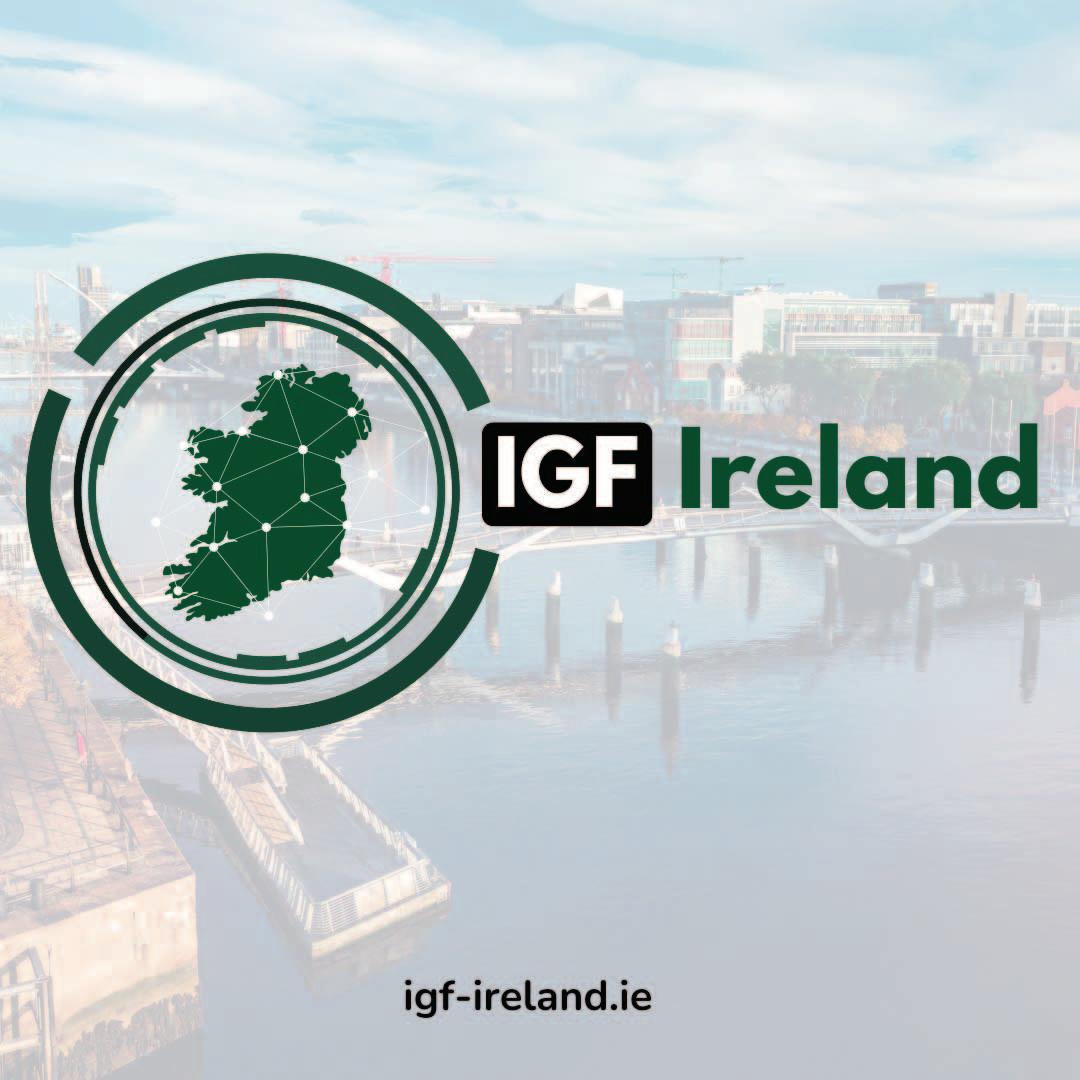
areas including tech, academia, civil society, and government.
The full agenda can be found at www.igf-ireland.ie and was created with the input from the Organising Team and from input from a public consultation.
Panels will cover important topics including:
• Global processes affecting internet governance
• Creating ethical, forward-thinking policies
• The impacts of geo-politics on internet governance
• A vision for a sustainable internet; and,
• How to achieve ethical AI governance.
As the countdown begins to IGF Ireland, there is a palpable sense of anticipation. This is more than just an event; it is a step forward in how Ireland engages with the most pressing digital issues of our time. IGF Ireland will take place on Thursday 22 May 2025 at DogPatch Labs, Dublin.
The success of a national IGF depends on the community’s participation. This means involving representatives from across society, including policymakers, business leaders, academic researchers, community organisations, and the general public. The IGF Ireland offers an opportunity for these groups to connect, share experiences, and contribute to shaping the country’s digital future.
Whether you’re a policymaker, a business leader, a researcher, or simply someone passionate about the internet, this is your opportunity to take part in the discussion! Keep an eye on www.igf-ireland.ie for updates and details on how to get involved. W: www.igf-ireland.ie










The 2024 refresh of Ireland’s National AI Strategy emphasises adapting regulatory frameworks to address rapid advancements in AI technology while aligning with the European Union’s AI Act.
One of the primary objectives of Ireland’s updated AI strategy is fostering public trust through transparency and ethical use. The strategy highlights measures such as rolling out AI standards and certifications, guided by the EU AI Act, which underlines the importance of member states adopting a risk-based approach to AI regulation.
The refresh aims to balance the innovation opportunities of AI with safeguarding fundamental rights, ensuring that businesses and public entities operate within ethical and safe frameworks.
The Government aims to strengthen its AI governance through the establishment of structures like the AI Advisory Council. This body provides
independent advice, aimed at helping the government navigate emerging challenges in AI adoption. It also advocates for transparency and accountability in public service AI deployments.
Notably, responsibility for ethical AI use is placed on system users, not developers, underscoring the importance of informed adoption practices by public and private entities.
The focal point of the refresh is to fully incorporate the EU AI Act, which was formally passed after the Government’s AI strategy, AI: Here for Good
By categorising AI applications based on risk –ranging from minimal to high – this aims to minimises obligations for low-risk systems like administrative
tools while imposing stringent requirements on high-risk uses, such as AI for recruitment or credit assessments.
Under the new regulations, the Government aims to lead in implementing regulations under the AI Act while introducing regulatory sandboxes to enable safe, innovative experimentation within controlled environments.
Speaking to eolas Magazine in February 2024, following passage of the AI Act, Government Chief Information Officer, Barry Lowry, said that he was “very pleased to note the progress made with the EU AI Act”.
“I think it has evolved well to now provide a very good balance between meaningful AI use and risk and privacy management. I look forward to its enactment,” Lowry said.
As the EU AI Act was being drafted, Lowry had warned in a previous interview with eolas Magazine (issue 60) that “there is a risk that misunderstood attempts to regulate AI are viewing AI as an entity, but it is not about AI as an entity, it is about how you use it”.
Lowry had further warned of the potential risks of introducing legislation “without a real understanding of what it is that is being regulated” and “without talking about shared risk”.
Implementing a universal framework for such a diverse technology poses challenges. AI’s dynamic nature makes it difficult to craft regulations that are both specific and adaptable.
For example, concerns over facial recognition technology highlight tensions between technological potential and privacy rights. These discussions underscore the delicate balance between the commitment to addressing nuanced ethical concerns while fostering AI adoption.
To support businesses, especially SMEs, the Government offers tools like the Grow Digital Portal and training programmes through CeADAR and other European Digital Innovation Hubs. These initiatives aim to provide access to resources like digital maturity assessments and AI integration workshops. Furthermore, the Government is encouraging collaboration across public and private sectors to maximise “the economic and societal benefits of AI”.
In the public sector, AI’s integration is designed to enhance service delivery while maintaining ethical safeguards. Initiatives like curated chatbots for government websites and AI-assisted healthcare diagnostics demonstrate potential gains in efficiency and accessibility.
The strategy ensures ethical alignment by requiring senior management to oversee and approve AI implementations, emphasising user accountability.
Overall, the aim of these new AI regulations is to drive innovation within regulated environments by leveraging resources like regulatory sandboxes, while building public trust through transparent and ethical AI use.
Through this, it is hoped that the refresh to the national AI strategy will help to foster talent and skills in AI through targeted educational initiatives, ensuring workforce readiness.
Speaking shortly prior to the publication of the refresh in November 2024, Minister of State Dara Calleary TD told eolas Magazine: “The refresh builds on the solid foundations in place, continuing to emphasise the importance of trustworthy, person-centred AI development and use, while positioning Ireland as a leader in seizing AI’s economic and societal benefits. To achieve these goals, the full engagement and participation of all parts of the public sector is absolutely crucial.”
“I think it has evolved well to now provide a very good balance between meaningful AI use and risk and privacy management.”


Government CIO Barry Lowry on the EU AI Act


The European Commission has outlined three main strategic orientations in the European Union’s (EU) largest research and innovation programme, Horizon Europe Strategic Plan 2025-2027, to “tackle key global challenges”.
Most notably, one of the plan’s key strategic orientations is supporting ‘the digital transition’, with the hope that supplementing research to support this transition will create a “more resilient, competitive, democratic and inclusive Europe”.
Since its creation in 2021, Horizon Europe has been “generating excellence through breakthrough knowledge and investment in solutions to long-term global challenges”, such as climate change, biodiversity loss, pollution, the digital transformation, health threats and an ageing population.
The Horizon Europe Strategic Plan serves as an interface between the EU’s main policy priorities and the Horizon Europe research activities. It strives to ensure the best value and impact for member states and associated countries investment in research and innovation.
The strategy supports many aspects including:
• Continuity and reliability for the research and innovation communities: The plan sets research and innovation priorities beyond the custom two-year period of Horizon Europe work programmes.
• Communication: The plan enables member states, associated countries, stakeholders and the public to engage with the European Commission on future research priorities in a transparent way.
• Synergies with national research and innovation activities: The plan allows member states and associated countries to seek a better alignment of their national and regional research and innovation strategies and activities with EU priorities, by improving coordination and increasing synergies between the national and EU funding.
• Synergies with other EU funding
instruments: The plan highlights further opportunities for synergies with other EU funding programmes.
The three key strategic orientations identified in by Horizon Europe for the 2025-2027 plan are:
• The green transition: Horizon Europe research and innovation activities must support Europe to become the world’s first climateneutral continent by 2050 and to tackle biodiversity loss and pollution. At least 35 per cent of Horizon Europe’s resources are committed to be spent on climate action and 10 per cent for 2025-2027 on biodiversity action.
• The digital transition: Research to support the digital transition is key to Europe’s competitiveness and open
strategic autonomy, and to setting human-centred standards. It is also key to achieving the green transition. In 2021-2027, Horizon agreed to invest at least €13 billion from Horizon Europe in core digital technologies.
• A more resilient, competitive, inclusive, and democratic Europe: Europe’s social rights, democratic values, and principles “need a strong foundation so they can be promoted globally”. Horizon Europe research was established to provide this foundation. This includes research on civil security, on a fair and environmentally friendly economic model, on health and wellbeing, and on democratic participation.
These key strategic orientations have been developed to “encapsulate the main EU policy priorities” which will guarantee “transformed open strategic autonomy… securing Europe’s leading role in developing and deploying critical technologies”.
The plan is also informed by the three pillars of Horizon Europe, which together, with the horizontal part on “widening participation and strengthening the European Research Area (ERA)”, designed to have a “synergetic impact”.
Pillar I: Excellent science This pillar supports frontier research and breakthrough scientific ideas (European Research Council), teams up the best researchers from Europe and beyond and equips them with skills and worldclass research infrastructures.
Pillar II: Global challenges and European industrial competitiveness
The strategic plan focuses primarily on Pillar II of Horizon Europe. The second pillar is made up of six clusters of research an innovation activities, to maximise integration and complementarities across the respective thematic areas while securing high and sustainable levels of impact for the EU in relation to resources that are expended.
Pillar III: Innovative Europe Pillar III focuses on improving the conditions for innovators to flourish at all levels of governance, supports the development of innovations to address EU strategic challenges, such as the green and digital transition, and strengthens EU
technological sovereignty, particularly in deep tech and breakthrough innovation.
The strong bridges between pillars and, where relevant, within pillars, call for a broader perspective in the strategic plan, to identify and leverage the reciprocal links, but aforementioned, the strategic plan focuses predominantly on Pillar II and its various ‘clusters’.
The strategy plan states: “Cluster one will continue to improve the understanding of the impacts of climate change and environmental stresses on people’s health and wellbeing and support the development of tools and measurers to protect people from these impacts and to combat global health challenges.”
Cluster one specifies that the Horizon Europe will continue work to develop and stimulate the uptake of new technologies and digital solutions to improve healthcare and health systems. This includes using technology to help people better understand and use health information, promote healthier lifestyles, improve pandemic/epidemic preparedness, prevent diseases, provide better diagnoses and more personalised treatments and care solutions.
This cluster aims to make Europe “more resilient, competitive, inclusive and democratic”. The cluster aspires to have research and innovation investment continue to strengthen democracy, increase democratic participation and protect fundamental rights and the rule of law, as well as promote cultural and creative industries and linguistic diversity, “paying particular attention to regional specificities and cultural diversity, as this enriches society as a whole”.
Cluster three aims to strengthen societal preparedness and resilience to disasters and threats, whether accidental or intentional. It also aims to guarantee the “security of digital networks and of the population in the online world”. Therefore, cluster three promises to
invest in cybersecurity research and investment to strengthen the EU’s resilience, protect its infrastructure, and improve its ability to cope with cyberattacks and incidents.
Cluster four aims to both strengthen Europe’s technological sovereignty and competitiveness; and support the transformation of its industries towards net zero emissions. The strategy plan states: “Cluster four will continue fostering leadership in digital and key enabling technologies, including digital and AI, while ensuring that they are aligned with European principles, values and rights.”
Cluster five capitalises on the digital transformation to accelerate climate neutrality by 2050. This involves improving climate models, and energy and mobility services. The plan explains: “Cluster five empowers people and organisations through better information and by involving them in co-creating and shaping solutions”, to ensure energy and transport systems become fair, safe and sustainable.
Cluster six drives forward the green transition, the first key strategic orientation for Horizon Europe. By supporting the European Green Deal, it “makes Europe more resilient, competitive, inclusive and democratic”. It also aims to promote a circular economy by increasing resource efficiency from design to disposal.
The new Horizon Europe Strategic Plan notes that to achieve the EU’s ambitions reflected in the new orientations, it is also essential to safeguard Europe’s open strategic autonomy and to secure Europe’s leading role in developing and deploying critical and emerging technologies. The six clusters outlined in Pillar II by Horizon Europe as well as all activities under Pillar I and Pillar III, have been designed to support each of the key strategic orientations.


Irish councils have realised that they can do more with less by working together, and are raising the bar for their online digital experiences without blowing their budgets, writes Stella Power, Managing Director, Annertech.
LocalGov Drupal (LGD) is a partnership of councils that work together to design, develop and share Drupal code to help one another serve their citizens more efficiently. They do this by creating bespoke websites that are set up to give their users exactly what they are looking for – whether it is finding information, applying for a service or paying a fine.
LGD is a publicly owned open-source distribution that is free to use – a CMS built by councils, for councils. By combining learnings and developing solutions to common problems and feature requirements, the LGD ecosystem is constantly evolving to improve service outcomes.
The LGD project aligns with the Build to Share initiative, which forms part of the Irish Government’s IT strategy. The initiative’s goal is for the public sector to share code in order to save valuable resources like time and money. With LGD, the features added by one council are available for other councils to use.
LGD started in the UK, but it was brought to Ireland by Annertech, and first taken up by Tipperary County Council. There were features that were pertinent to the Irish market that had not yet been developed. These include obvious must-haves like Irish translations but also other features such as an integration with the Irish Service Catalogue and pulling in Weekly Planning Notices.
In the spirit of giving back to the project, Tipperary County Council funded an LGD extension that imports the services that a council offers from the Irish Service Catalogue. It gives councils a good launching point for their content because not only does it list and import all the services, but it also creates a page for each of them and structures the content throughout the site.
The service pages are created in both English and Irish, and the pages just need to be edited or updated, adding to a quick website turnaround.
In addition to the Irish Service Catalogue feature, Tipperary County also funded the LocalGov Multilingual feature, which adds the Irish translations.
Similarly, Carlow County Council funded the build for the Weekly Planning Notices extension. It is a statutory requirement that all Irish councils are required to publish information about the planning applications granted and declined each week. This extension provides a way for Irish councils to upload and publish the notices. In addition, it allows them to be posted in Irish, boosting the crucial multilingual functionality of LGD sites.
Carlow County Council also funded councillor listings and council minutes/agendas extensions, which allow users to search for councillors, and minutes/agendas by municipal district or meeting year.
“We have had positive feedback from the people who use our website and the number of hits on our website has dramatically increased,” says Martina Loughnane from Carlow County Council.
“We were delighted to be able to give back the Weekly Planning Notices module to the LGD community and hope that the other local authorities who follow us into the fold will get good use out of it.”
And they have – both Laois County Council and Galway City Council, which recently launched their new LGD websites, used the features contributed by Tipperary and Carlow county councils.
There are usually budgetary challenges in building a website from scratch or migrating from an existing website, and the public sector is under pressure to spend its budget wisely.
Because the code already exists the LGD project can see councils saving up

to 80 per cent on their digital projects. And because LGD is an open-source CMS, there are no licence fees involved and councils are not locked into expensive contracts or proprietary software.
“We believe that local authorities should be working collaboratively instead of in parallel spending €100,000 to €250,000 on singular websites, potentially being out of date in a few months,” says Ruth Maher from Tipperary County Council.
By using a platform that other councils have already built to meet business objectives, councils save on time and the resource-intensive tasks of redesigning and rebuilding platforms.
“LGD freed up our time and budget to allow us to focus on added-value services as opposed to reinventing the website code-base from scratch,” adds Maher.
Tipperarycoco.ie was completed – from start to finish – in just four months! Carlow.ie was completed in 11 – not bad for a council website with lots of content that needed to be rewritten.
Councils are varied – some have massive resources for their digital strategy while others have one or two content managers. LGD offers councils a way of levelling the playing field –councils who are new to the platform gain access to knowledge and practices from other councils that have already solved many common problems.
Each council who uses LGD is contributing towards the community. As the platform grows, their input helps to shape, build and improve the partnership for all councils involved. As other Irish councils encounter features that they’d like, they can pool their resources to have them developed.
And with 53 councils having joined the LGD community that means a lot of people are enjoying its benefits.
Annertech is Ireland’s leading opensource digital agency and has become the “go to“ experts for Drupal and LocalGov Drupal. Founded in 2008, Annertech works with many clients in both the private and public sectors.
In 2021 Annertech UK opened to service a growing number of clients and staff members in the UK. Annertech’s mission is to help companies to embrace opensource technology to deliver ambitious digital experiences for their customers.
Their work has won some of Ireland’s most prestigious digital awards, including multiple Spider Awards (including the coveted Grand Prix award), National Digital Awards and Digital Media Awards.
T: 01 524 0312
E: hello@annertech.com
W: www.annertech.com/localgovdrupal
Launched by Simon Harris TD in 2024 when he was Minister for Further and Higher Education, Global Citizens 2030, Ireland’s talent and innovation strategy, aims to “embed excellence in talent and innovation into Ireland’s global footprint”, although it falls short on specific detail.
The Global Citizens 2030 strategy aims to establish the State as a global leader in education, research, and innovation, with a focus on talent attraction, international collaboration, and addressing global challenges like climate change and digital transformation.
The strategy is structured around six pillars:
Talent and innovation at the heart of Ireland’s global footprint: Ireland’s integration of education into its diplomatic strategy through Team Ireland mirrors France’s Campus France initiative, which effectively combines education with diplomacy. However, stronger alumni networks like Germany’s could further support this effort.
A first choice destination for international learners, researchers, and innovators: The International Education Mark (IEM) is analogous to the Dutch NVAO accreditation, which has received acclaim as a ‘step forward’. However, housing shortages and cost-of-living challenges pose risks. Emulating Finland’s municipal-university partnerships for student accommodation could provide a solution.
Global citizens in multi-national, multi-cultural, and diverse workforces: This pillar highlights international mobility and inclusivity. Norway’s Internationalisation at Home initiative offers a model for improving global competencies for students unable to travel, which could be an exemplar model for Ireland in connecting students located in rural parts of the country.
Enhanced influence in European education and research: Ireland’s active participation in Erasmus+ and the European Universities Initiative aligns with EU priorities. To strengthen its impact, Ireland could emulate Sweden’s leadership in sustainability-focused research within Horizon Europe.
A new level of north-south and east-west collaboration: This measure is focused on collaboration on the island of Ireland, and with Britain on university partnerships. However, there are significantly more Irish students studying in the UK than British students studying in Ireland, and students from the North study in Britain in much higher number than they do in the Republic.
Thought leadership in international education and research policy: The ambition to lead as a small advanced economy parallels Denmark’s focus on sustainable energy research, and is relatively more details than other proposals. Ireland’s success will depend on prioritising sectors where it holds existing strengths, such as med-tech and agri-food innovation.
The strategy, while it outlines high levels of ambition for the expansion of innovation in the State’s labour market, is short on specifics. When comparing with measures in other EU member states, such as Finland’s infrastructure planning, Norway’s inclusivity measures, and Sweden’s focus on sustainability, it is clear that while Ireland is respected as a digital leader in the EU, that the Government must focus on actionable policies to realise its goals under the Global Citizens 2030 strategy.


The eolas AI Forum 2024, sponsored by BearingPoint Ireland, Hewlett Packard Enterprise and HP with AMD, took place on Thursday 24 October at the Gibson Hotel, Dublin. Over 250 delegates attended the event, learning about the latest developments in AI. The Forum examined how AI can make an impact on organisations and examined how we can deliver the principles of AI – Here for Good: AI that is trustworthy, people-centred and ethical.
Delegates in attendance heard from speakers, both visiting and local, from organisations including the Department of Enterprise, Trade and Employment; Insight, UCD; The Alan Turing Institute; European Commission; University of Manchester; and National Standards Authority of Ireland.
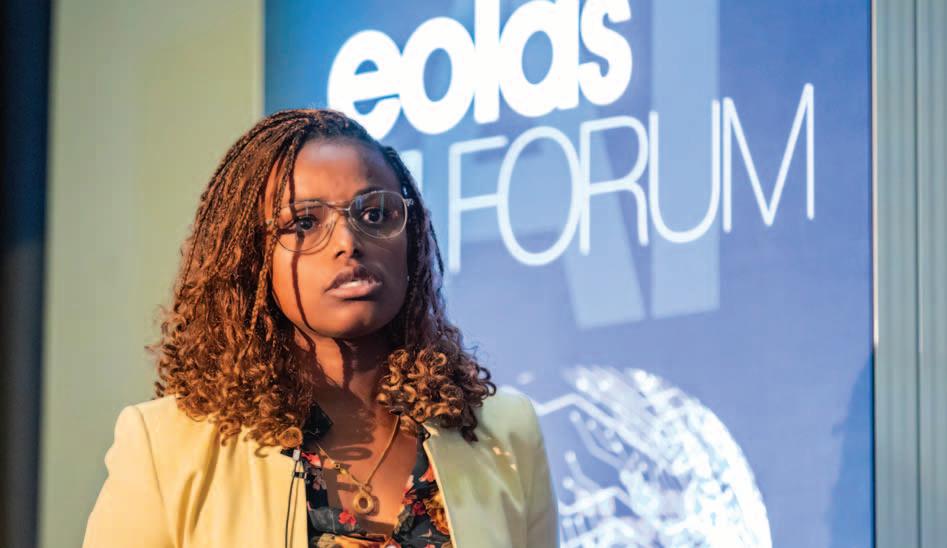



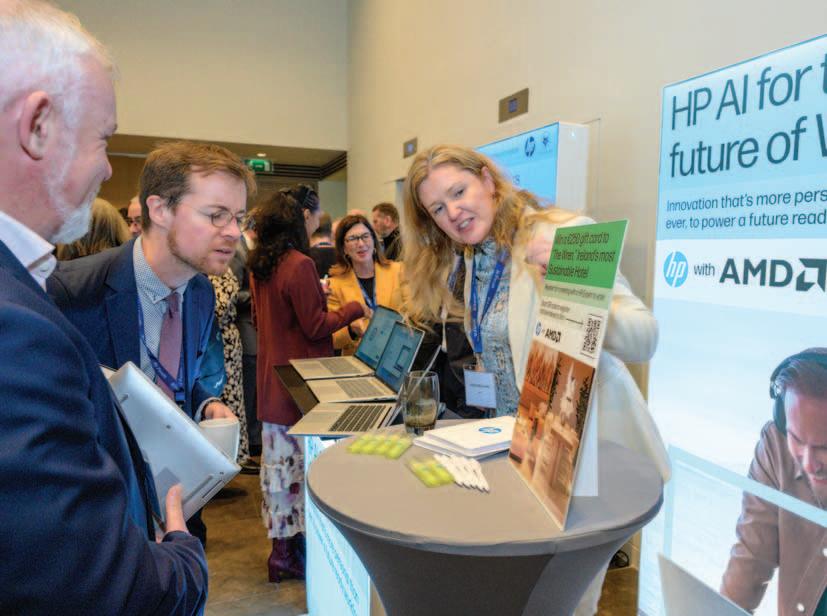



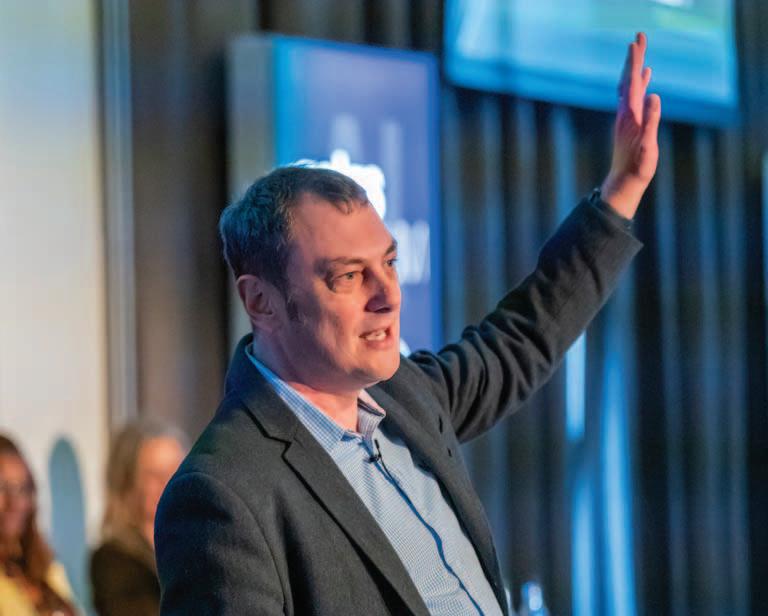

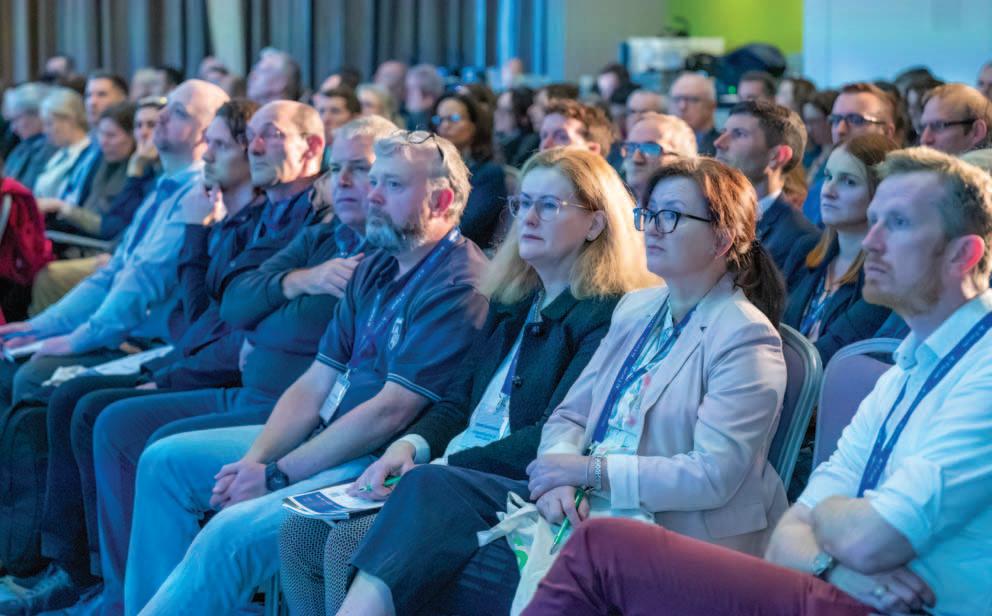

Sponsored by

This popular, interactive conference is a must-attend event. It provides a valuable opportunity to bring together key stakeholders to gain insight into the government’s objectives for digital transformation and hear directly from those responsible for driving this forward. Take the time to reconnect and network with your peers and colleagues, key senior policy makers and decision takers. The conference also features a busy exhibition zone featuring some of Ireland’s most committed and innovative technology and solution providers.
Speakers include:








Barry Lowry Department of Public Expenditure, NDP Delivery and Reform
Birna Íris Jónsdóttir Digital Iceland
Mike Skelton Government Digital Service, UK
David Scanlon AWS
Thomas Simpson Department of Health, Northern Ireland
Hazel Murray Munster Technological University
Vincent Duffy Revenue







Fran Thompson Health Service Executive
Anne-Marie Sherkle Department of Education
Edel Smyth Health and Safety Authority
Martin Tully Department of Housing, Local Government and Heritage
Sabahat Khan Local Government Management Agency
Phillip Fischer University College Dublin
Pete Struthers St James’s Hospital




Sponsorship and exhibition opportunities available!
There are a limited number of available sponsorship and exhibition opportunities at this conference which will be of interest to companies and organisations with products or services they wish to promote. For further information and to learn how your organisation can benefit, contact jillian.Wallace@eolasmagazine.ie
To register







